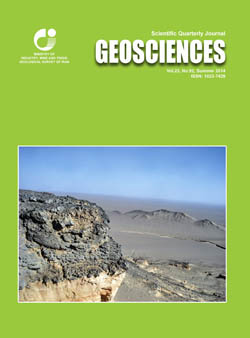Document Type : Original Research Paper
Authors
1 Ph.D. Student, Institute of Seismology, International Institute of Earthquake Engineering and Seismology, Tehran, Iran
2 Associate Professor, Earth Physics Department, Institute of Geophysics, Tehran University, Tehran, Iran
3 Associate Professor, Research Institude for Earth Sciences, Geological Survey of Iran, Tehran, Iran
Abstract
The Doruneh fault is the second longest fault systems in Iran. This fault is 700 km long and extended from the Afghanistan-Iran border to the central Iran desert. Despite of its length, and position in the convergence zone between the Arabian and Eurasian plates and its seismic potential, only one historical earthquake (M>7) and two instrumental (M>6) earthquakes are recorded on this fault. Therefore, study of this fault is very important for evaluation of its seismic hazard. In our study, we used the Landsat images, aerial photographs, topography maps, geological maps and field work data to identify and estimate the amount of displacements of rivers, rock units, and some alluvial fans along this fault. Three branches of the Doruneh fault investigated in this study, named as the north, middle and south branches according to their geographical locations. This study demonstrates that both of the maximum and minimum fault displacements have occurred on the southern branch. Furthermore, the amount of displacements of the rivers, which have cut the alluvial fans during the Quaternary period, suggests that this branch, particularly between 57˚00΄ and 58˚50΄E, is more active than the other branches. Although, several slip rates were previously determined using different methods for some parts of this fault by the authors and other researchers, we suggest further dating and geodetic methods in the same regions and other part of the fault to estimate and compare the slip rate of different branches of this important fault.
Keywords

